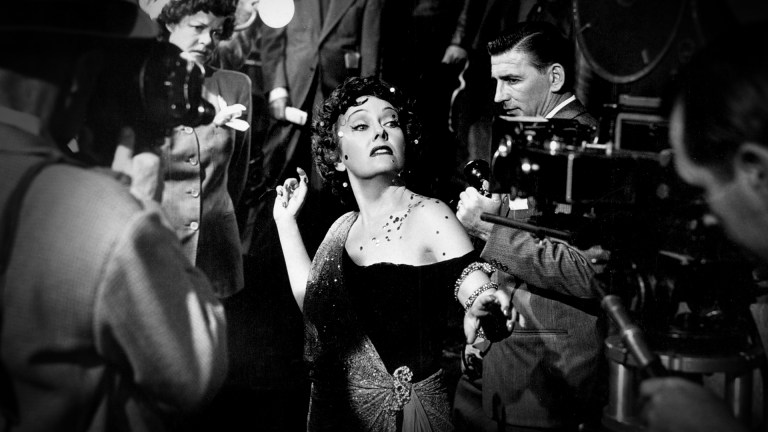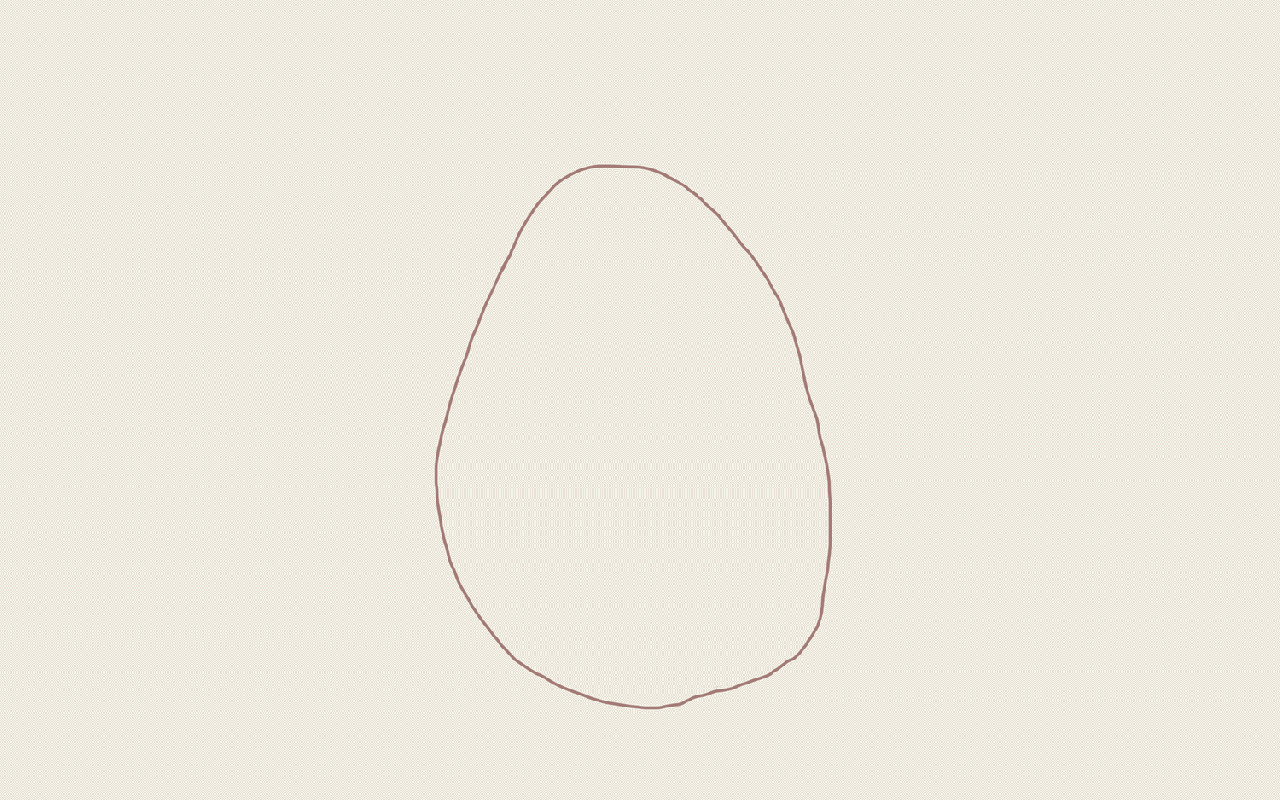
How To Draw A Rose: A Step By Step Guide
This step-by-step guide on how to draw a rose is perfect for illustrators of all ability levels. Draw this flower digitally or with a pen and paper.
Some of the best ways to learn new drawing techniques is by utilizing drawing tutorials and practicing with simple shapes until the piece is at its best. Draw a rose step-by-step with this tutorial that begins with your first line and ends with tips on coloring and shading the flower. Artists of all levels are invited to work with this guide to learn how to draw roses and create the best rose drawing one’s ever seen. Follow along through the simple steps and guidelines below to perfect one of the world’s most popular flowers.
Step One: Finding Inspiration for Your Rose Drawing
Familiarize yourself by looking at a picture of a rose or a rose itself. Study the way the petals surround the bud and how they open up at the ends.
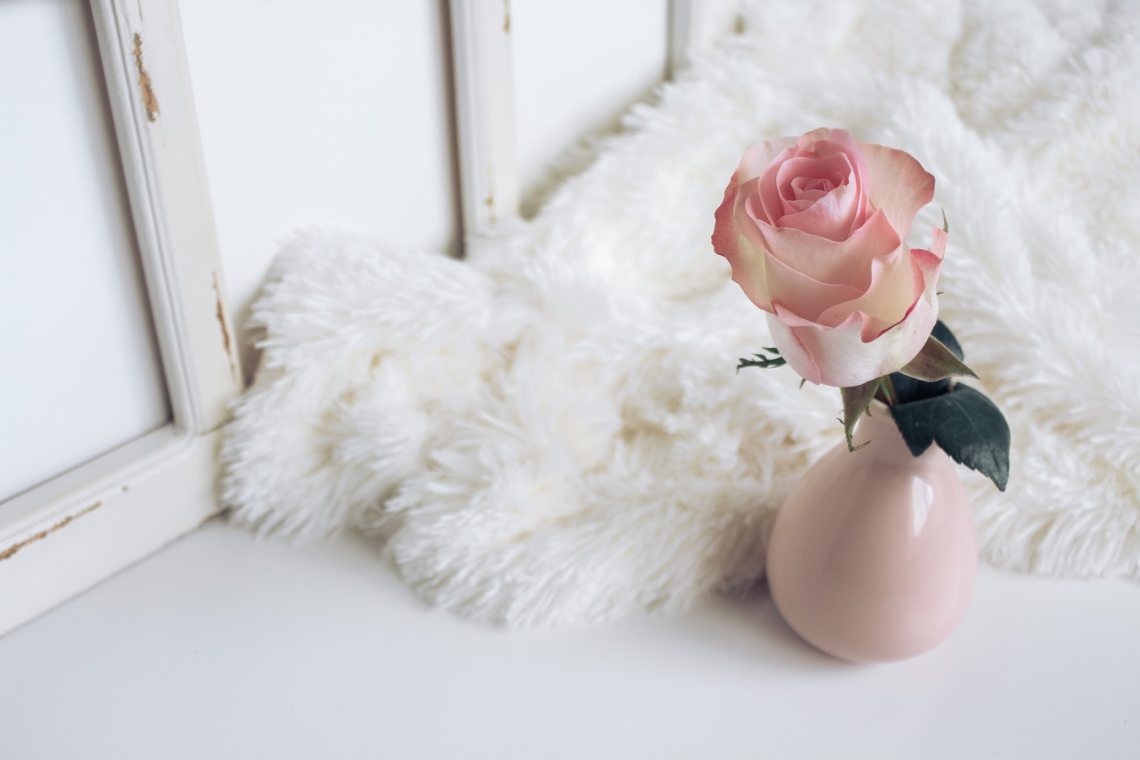
Step Two
Draw an oval shape that’s more narrow on the top. It should look like an egg and this will serve as your “skeleton.”
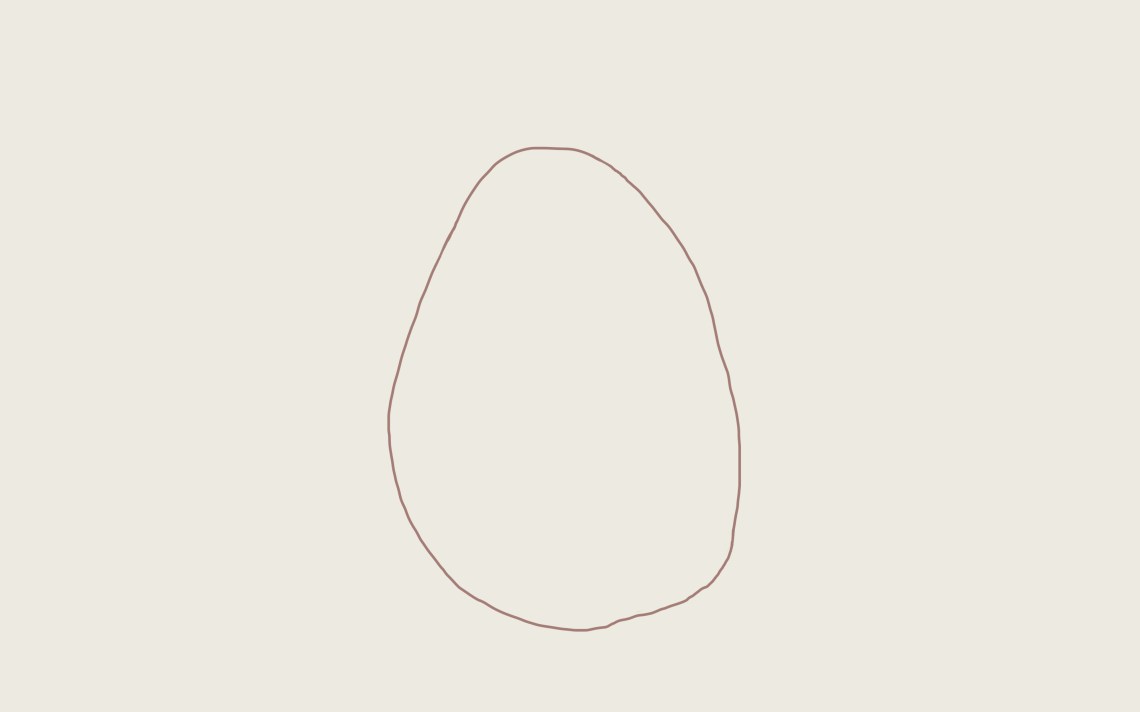
Step Three
Next, draw a short curved line at the very top of the “egg” that resembles a smile.
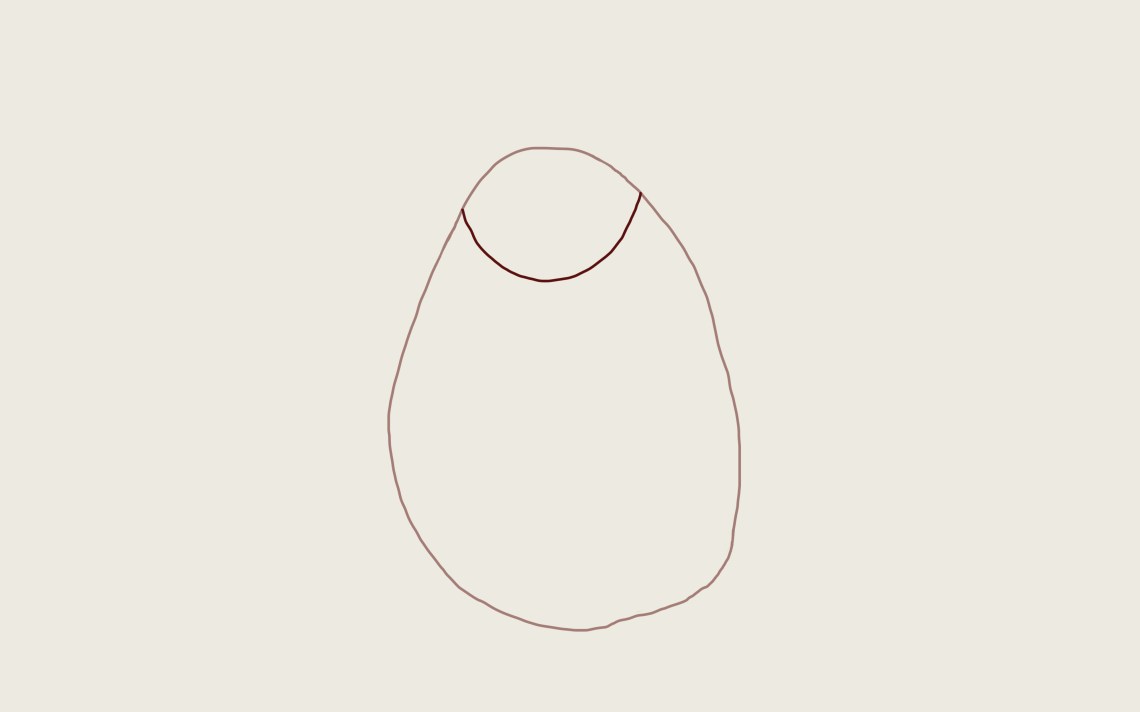
Step Four
Draw another smaller upside-down curve at the top of the egg. These two lines connecting resemble a sort of eye shape.
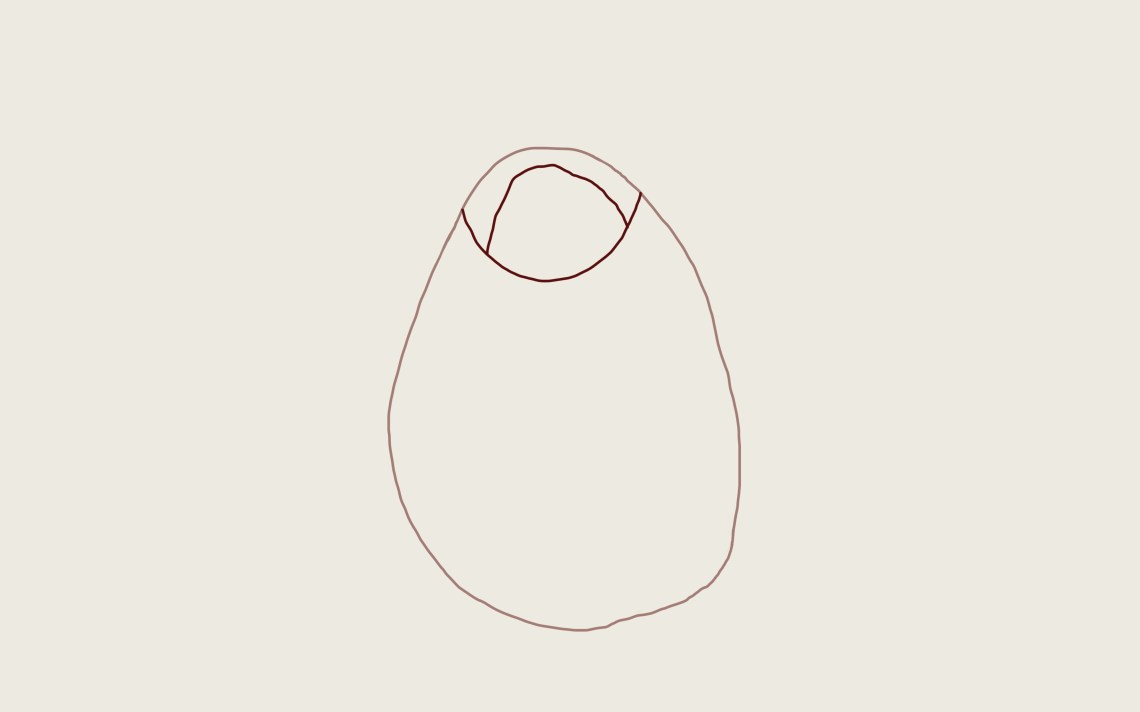
Step Five
Draw a spiral shape within the small eye-shaped space at the top of the egg.
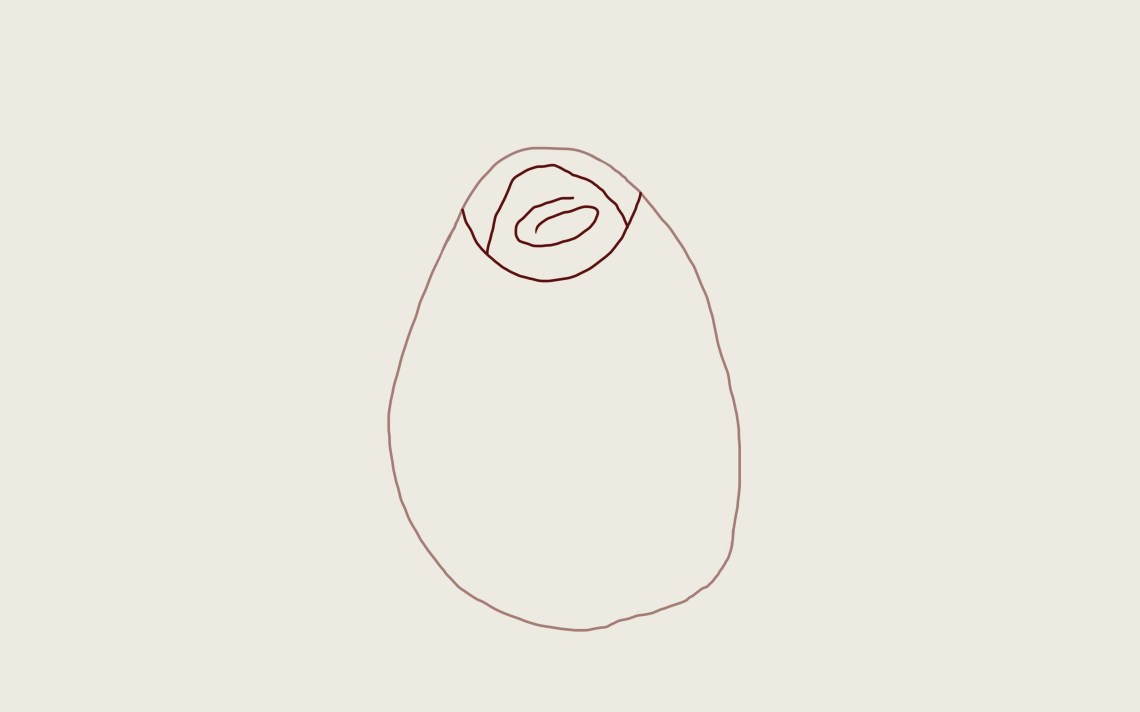
Step Six: Drawing Petals
Draw lines from the spiral shape starting at four distinct points that meet the smiley-faced curve right beneath the spiral. These are your innermost petals at the rose center.

Step Seven
Draw few petals that resemble a heart shape bordering your innermost petals. Use your smiley-faced curve as the bottom of your heart and make it so that the two humps of your heart meet in a point at the top of the egg.
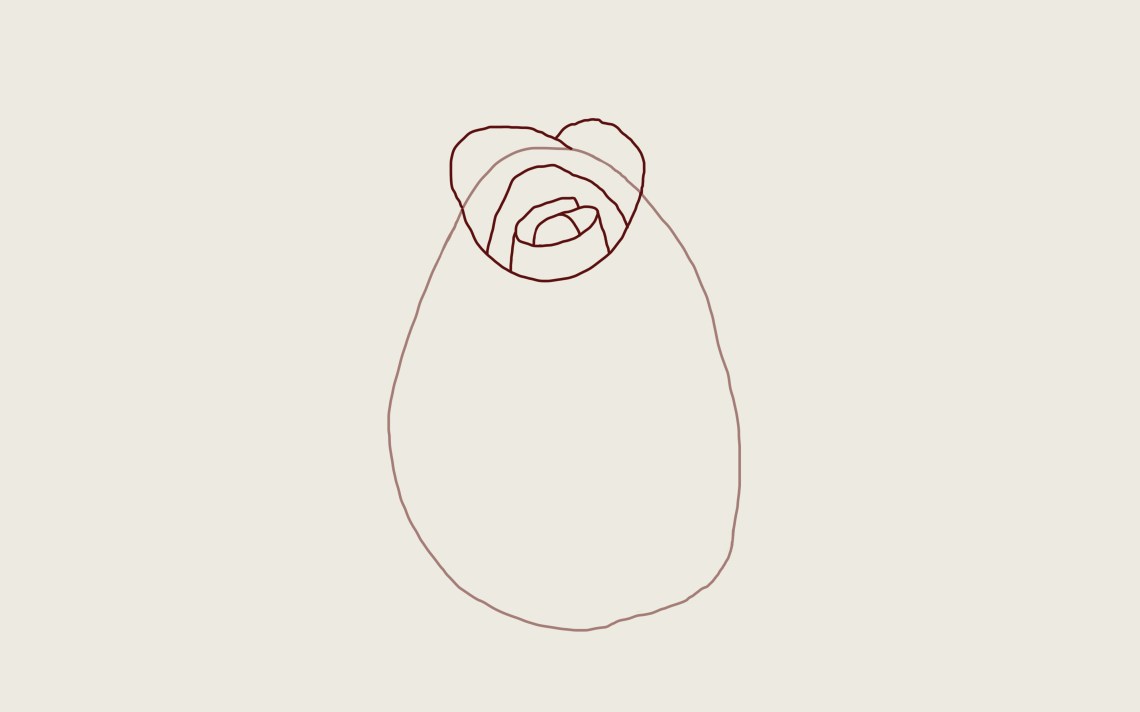
Step Eight
Draw two more petals, like a heart fully encircling the inner petals. Then add a line from the left petal (the lefthand half of your wider heart) to the outer egg.
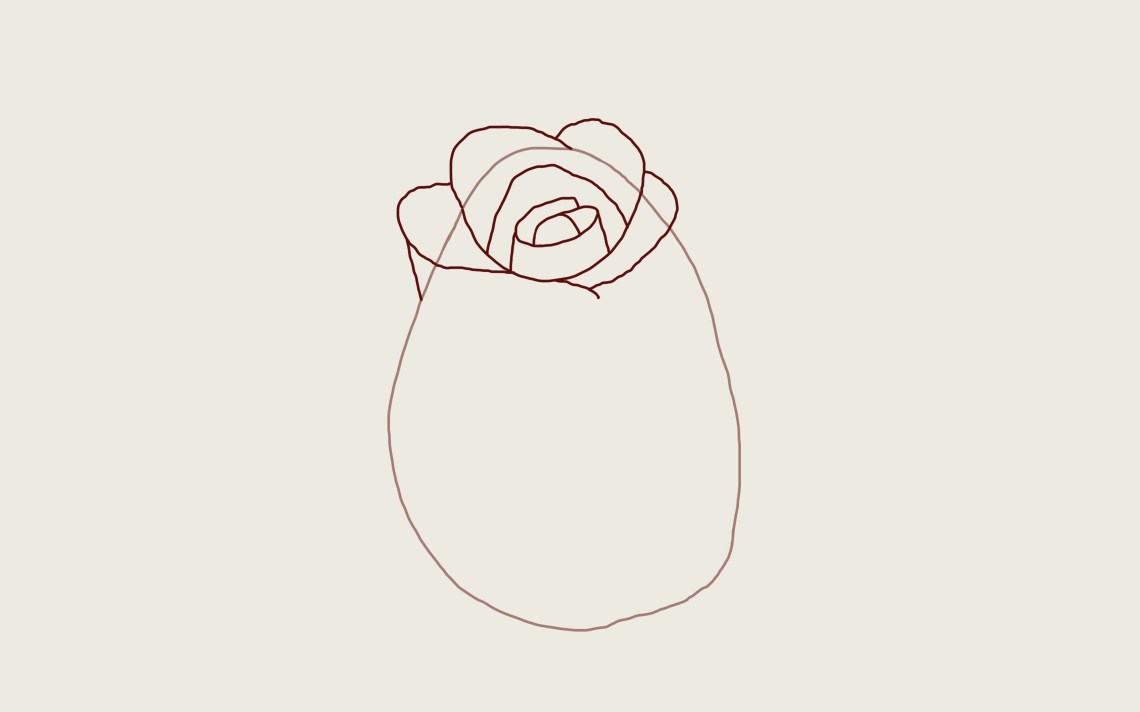
Step Nine
Draw the outermost back petal.
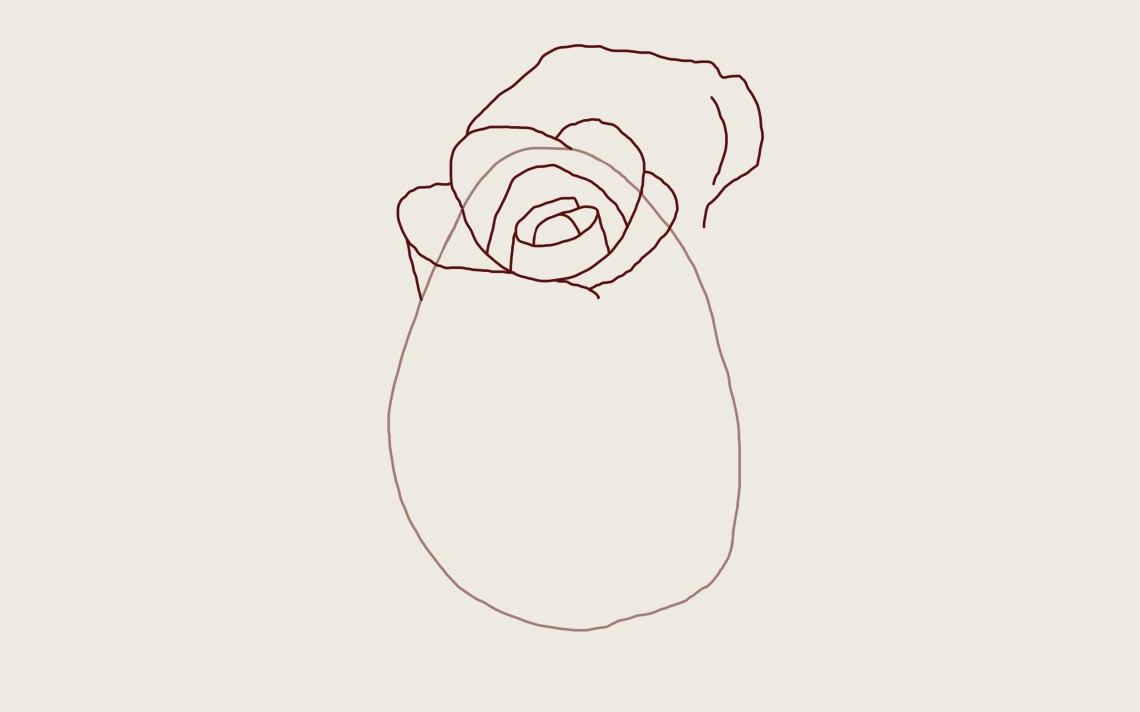
Step Ten
Then, add another petal, swooping the front of your egg and touching the wider heart at its bottom point to add more dimension to the flower.
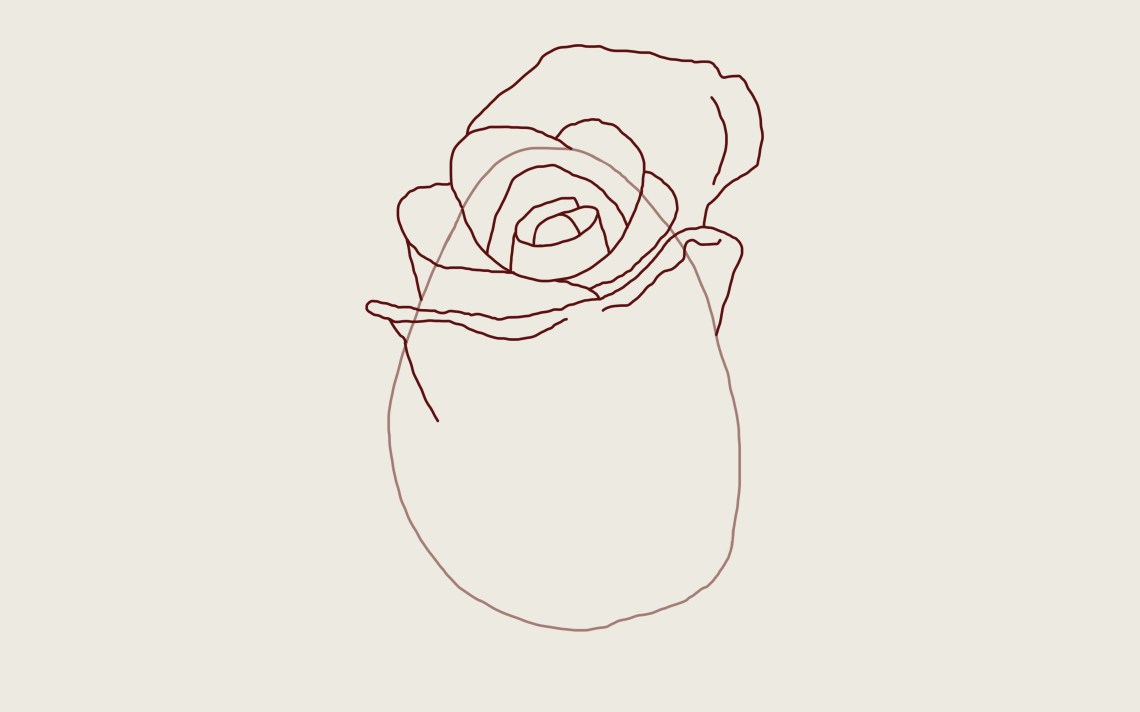
Step Eleven
Now draw the second back petal.
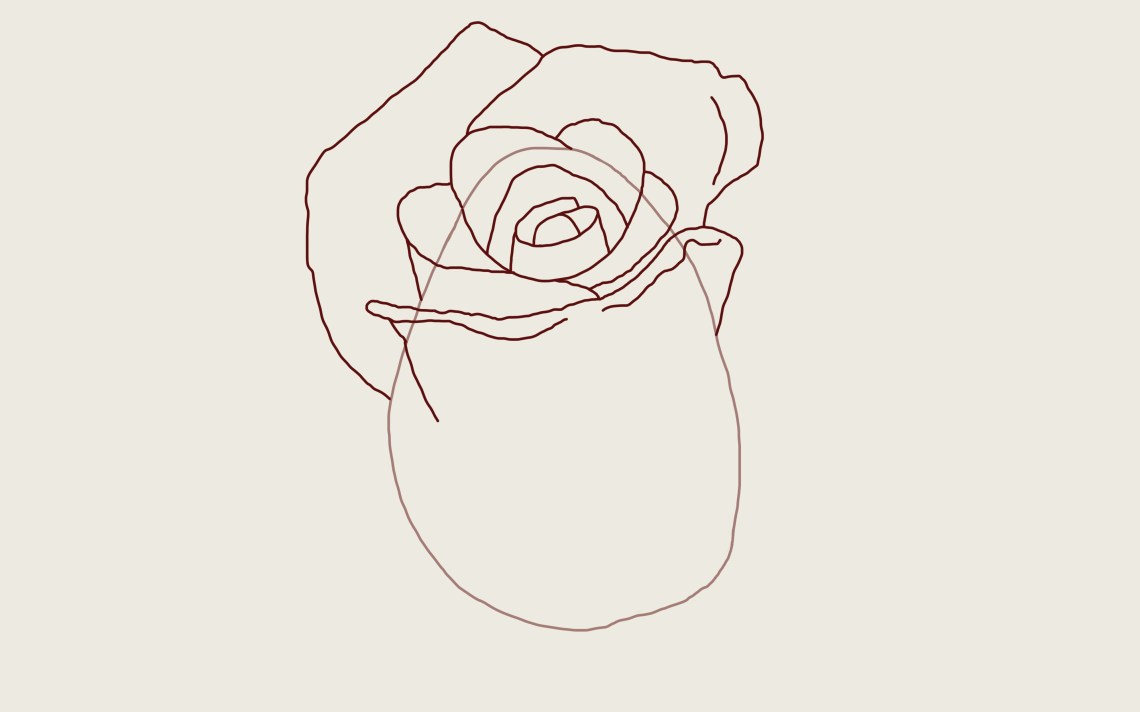
Step Twelve
Draw the next petal that swoops down the front of the rose diagonally. Think of this as the v petal.
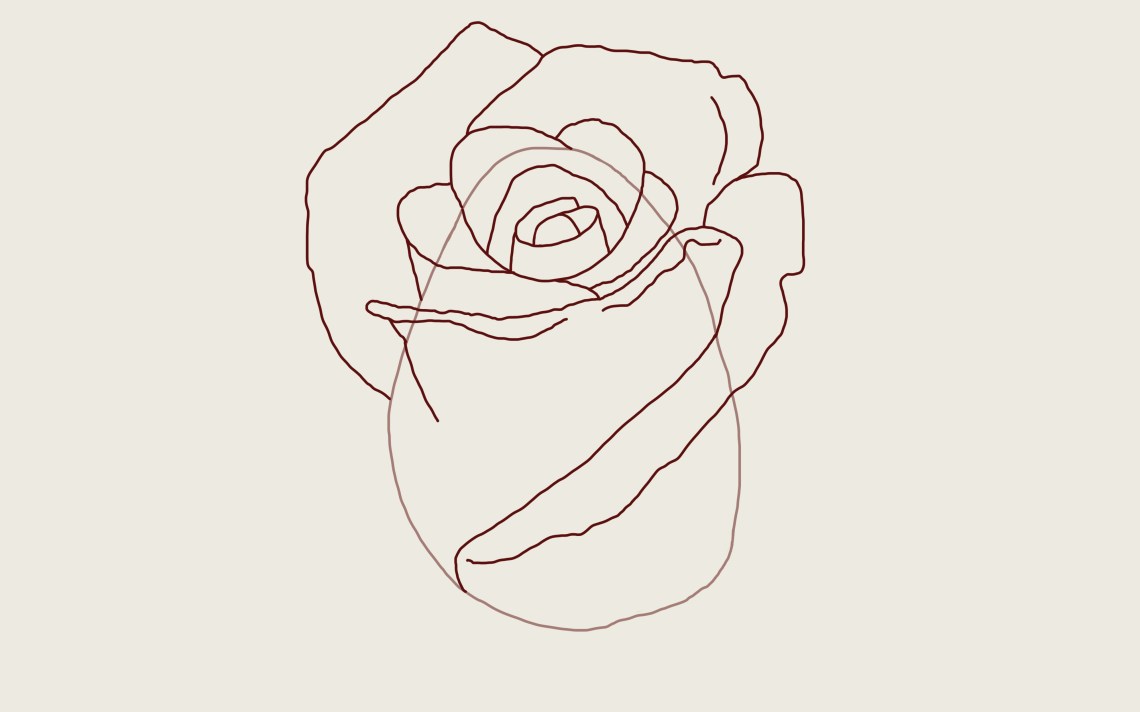
Step Thirteen
Complete the v by adding the petal which connects to it.

Step Fourteen
Feel free to add another petal peaking out the back. Nature is sometimes asymmetrical!
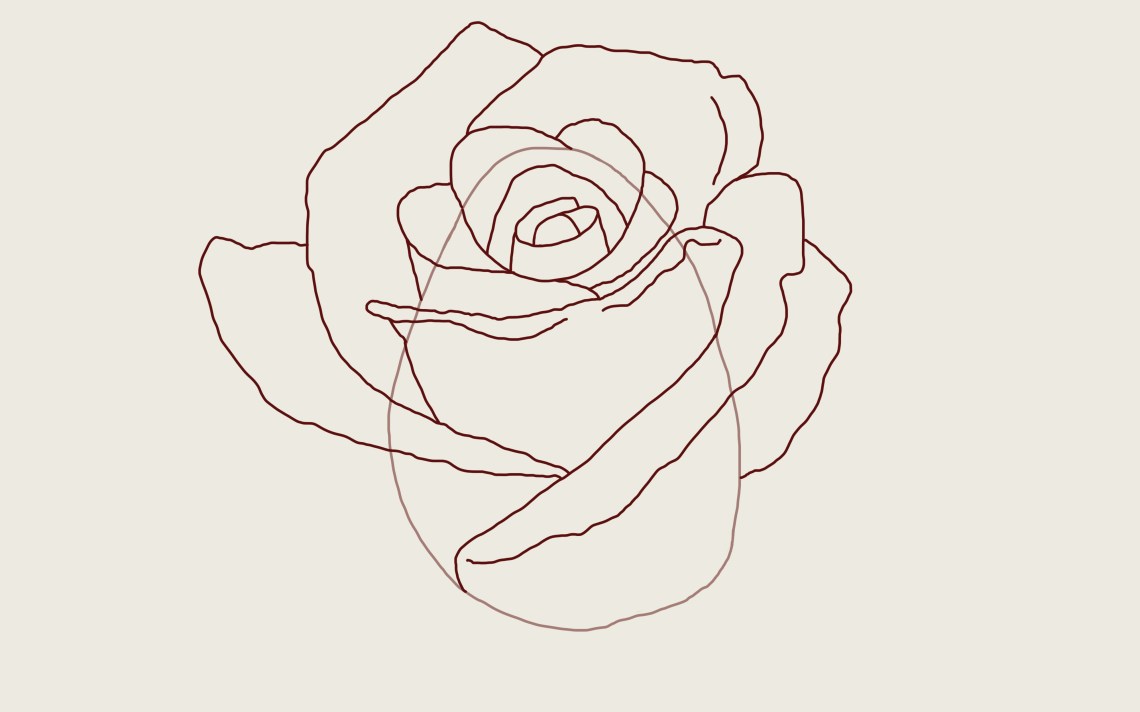
Step Fifteen
Clean things up by erasing the “skeleton” lines, otherwise known as the light lines that helped shape the drawing and other petals. Below is your image with skeleton lines.

Below is your image without skeleton lines.

Step Sixteen
Draw some leaves at the very bottom of your rose.

Step Seventeen
Connect your leaves with the bud that will eventually serve as your stem connector.

Step Eighteen: The Stem
Here comes the stem! Draw an “S” shape and join it to your stem connector.

Step Nineteen
Then come the bottom of the stem, a very small oval (or egg).
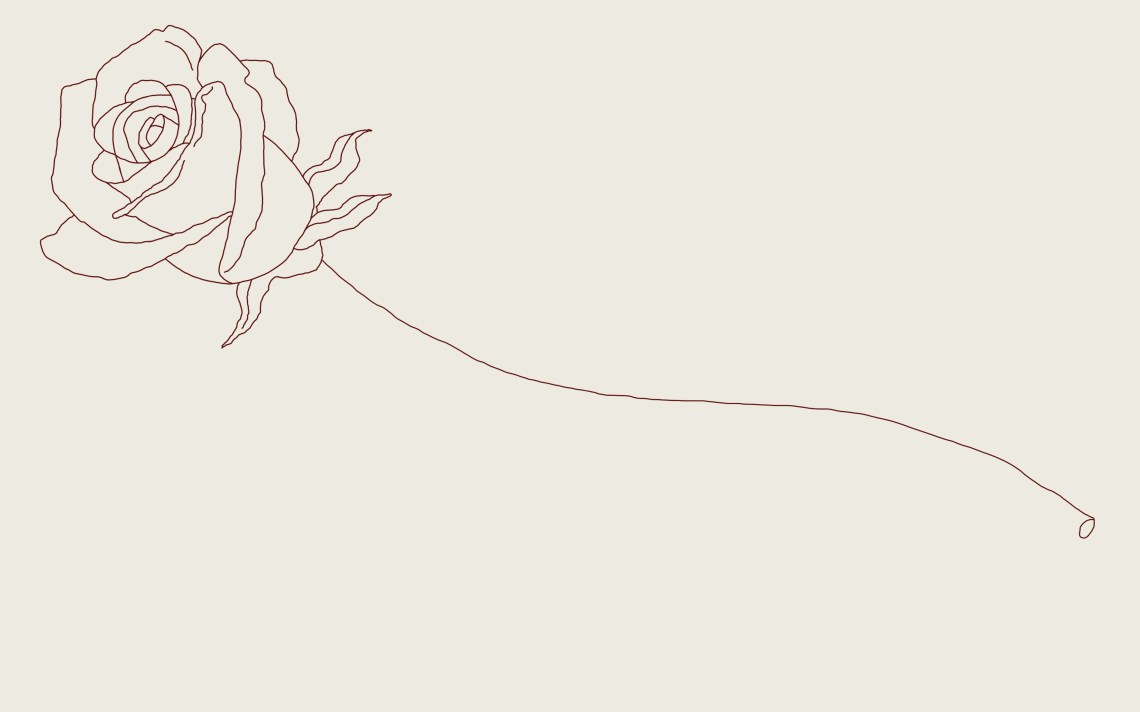
Step Twenty
Draw the same thing, another s shape, underneath the first one, connecting it to the other side of your tiny stem “egg.”
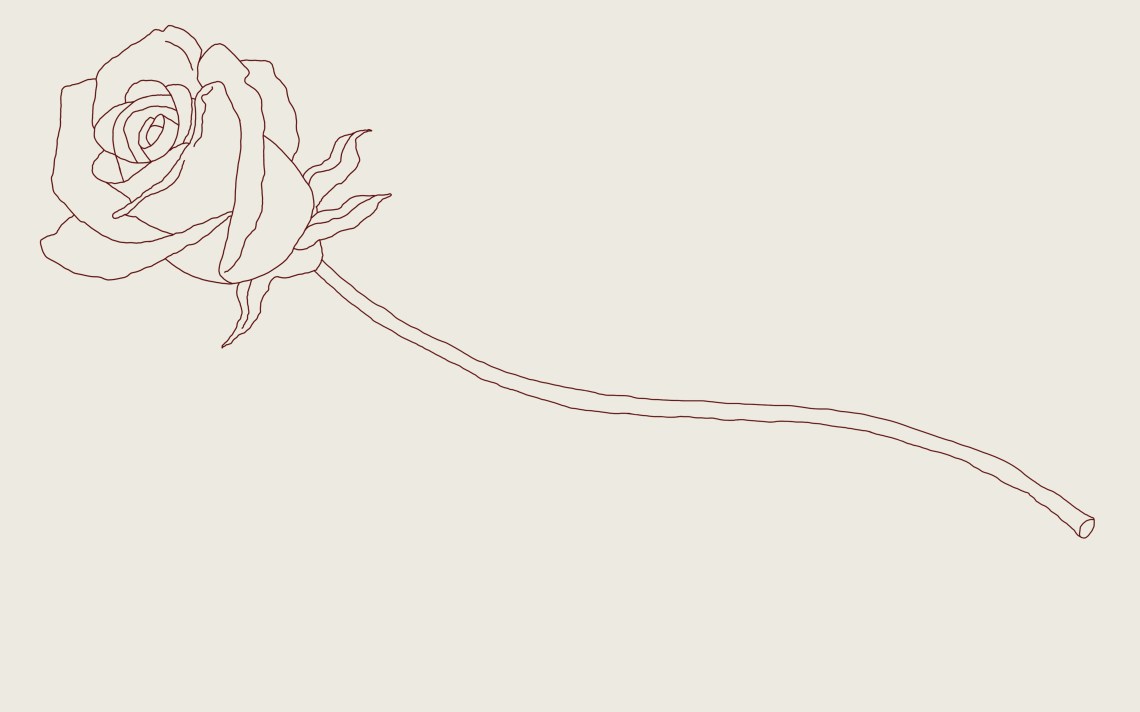
Step Twenty-One
Let’s draw some more s shapes growing out of our stem for our leaves.

Step Twenty-Two
Draw heart-shaped leaves that connect to your s shapes.

Step Twenty-Three
I like to draw “ridges” on the outside of my rose petals to add more shading and texture to the flower drawing.

Step Twenty-Four
Up next are the prickly thorns.
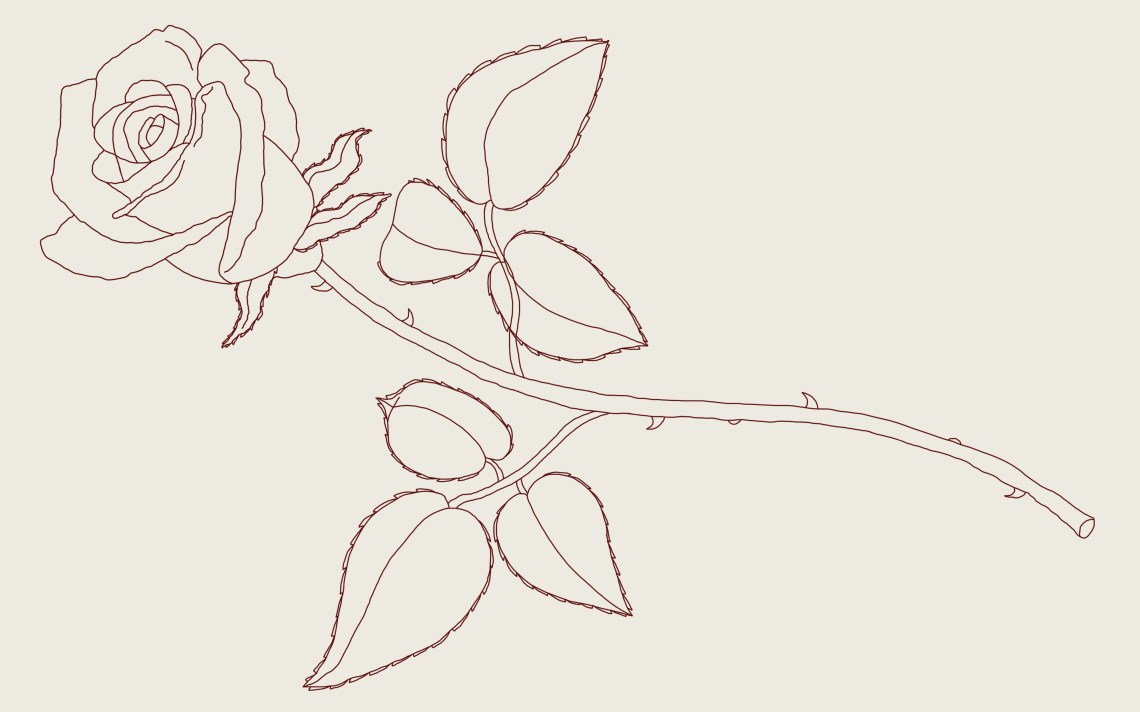
Step Twenty-Five
Clean up by erasing the “skeleton” lines on your stem/leaves.

Step Twenty-Six
Feel free to add some fun veiny leaf detail! This can add some more interest and texture to the rose.

Step Twenty-Seven: Add Some Color
Finally, here comes the fun part. Color your rose! Add some shadow! And voila! You are done.

Rose Drawing FAQ
Common questions and answers from artists around the world.
Why can it be difficult to draw a flower like a rosebud?
The three-dimensional perspectives required to draw a flower or rosebud like the one in this tutorial can be challenging. You need to think through the various rose petals and how they work together to complete the actual flower head itself. This step-by-step tutorial should make a simple rose drawing easy.
Should I add shading to my image?
You certainly can. Try starting with light shading first then adding in shading as you go. Think about the perspective of the actual flower itself and the shape of the flower, then think about where you might see shadows in real life.
What can I use this drawing for?
You could make custom cards for Mother’s Day or maybe Valentine’s Day. These are just some ideas.
Can I use colored pencils to draw this flower?
You certainly can. But try to use a dark pencil to draw the flower, like in this tutorial. There are many ways to draw a rose, try to have fun with it. Be creative and explore what works for you.
Why am I having a hard time drawing a rose?
It’s okay! It’s not easy. Take your time and keep practicing. Drawing a realistic rose can be a feat for beginners and intermediates. Try to take your time and go slowly, start small, and then increase your complexity of the rose as you go.
What paper should I use?
Heavy card stock paper is great to use. Or construction paper. Try not to use printer paper as it will be difficult to work with. And doesn’t look as great when you draw flowers on it.




